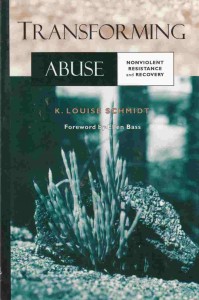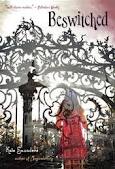 I found the young adult novel Beswitched by Kate Saunders to be a fun, interesting read. While the main character Flora was a little whiny and spoiled, I enjoyed the mix of modern day life with life in the past, dabbling in magic and inter-generational relationships. Flora is sent away to boarding school while her parents travel to take care of Flora’s grandmother. Before the angry and hurt Flora can become accustomed to her new life at school, she is suddenly transported 80 years in the past and finds herself living the life of an unknown girl in a 1930s boarding school. While trying to solve the mystery of her time travel, Flora makes friends and enemies, struggles to survive without her modern day necessities and helps liven up the lives of her roommates.
I found the young adult novel Beswitched by Kate Saunders to be a fun, interesting read. While the main character Flora was a little whiny and spoiled, I enjoyed the mix of modern day life with life in the past, dabbling in magic and inter-generational relationships. Flora is sent away to boarding school while her parents travel to take care of Flora’s grandmother. Before the angry and hurt Flora can become accustomed to her new life at school, she is suddenly transported 80 years in the past and finds herself living the life of an unknown girl in a 1930s boarding school. While trying to solve the mystery of her time travel, Flora makes friends and enemies, struggles to survive without her modern day necessities and helps liven up the lives of her roommates.
I thought the ending was sweet and a bit of a twist (although about halfway through the book, I started noticing clues to where the story was headed). I liked the personalities of the girls Flora meets in the past and how she realizes what is really important in her life.
Wow. In a report recently released by the US Department of Agriculture, the average middle-income American family will pay almost a quarter of a million dollars to raise a child (not including college expenses). A family that earns more than $100K a year pays over $150K more than the middle income family. In this article at THE WEEK, they break down the amount into categories (food, child care, etc.). I was most interested in how much the numbers had changed from 1960.
- Total amount is 23% higher in 2011 than it was in 1960.
- In 1960 only 2% of the total was used for child care and education. In 2011 that number is 18%.
I wonder if the cost goes down per child if you are raising more than one child at a time. I wonder if some folks who decide not to have children will cite this as a reason (with numbers to prove their case). And, of course, I wonder how many parents don’t really care how much it costs because the intangible benefits are so valuable!
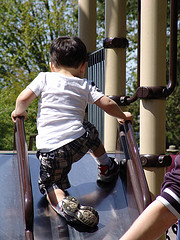 I’ve been thinking a lot lately about doing things the right way versus doing it YOUR way. When you’re learning something new, be it a recipe or a musical instrument, you usually start by doing it the right way: following the directions, working with a teacher or looking at examples. That makes sense when you’re learning. But don’t you find that once you’ve done it the right way a few times, you’re reading to start doing it YOUR way? Adding your own individual flair? Mixing it up a bit?
I’ve been thinking a lot lately about doing things the right way versus doing it YOUR way. When you’re learning something new, be it a recipe or a musical instrument, you usually start by doing it the right way: following the directions, working with a teacher or looking at examples. That makes sense when you’re learning. But don’t you find that once you’ve done it the right way a few times, you’re reading to start doing it YOUR way? Adding your own individual flair? Mixing it up a bit?
And, when you think about it, aren’t most new ideas the product of looking at old things in new ways or trying a new way of doing something? Some of my best meals have emerged from substituting a missing ingredient or adding a bit of extra spice (or cheese!). Some of my best photographs have emerged from viewing the scene at a totally different angle. And some of my best conversations have emerged from approaching a topic in an unexpected way.
Minecraft – Penguin by ~Dragonith on deviantART
With a Minecraft fantatic in the house it’s a no brainer to appreciate the talent it took to create these Minecraft penguin models. Doesn’t look like they are part of an actual mod yet but I’m sure someone will do the programming and these little guys can wander around our Minecraft lands!
Tags: penguins
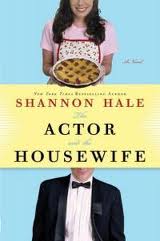 The much more than chick-lit novel The Actor and the Housewife by Shannon Hale was a fun, thought-provoking read. Becky is a happily married Mormon housewife who inexplicably befriends Felix, a well-known British actor, while she is in Hollywood. Throughout the book we wonder why they are friends and if perhaps the friendship should become more. We quickly realize that, despite our own feelings about our celebrity crushes, Becky and Felix are at their best for each other when they are only friends. Hale’s dialogue is wonderfully expressive and her way with words is a joy to read.
The much more than chick-lit novel The Actor and the Housewife by Shannon Hale was a fun, thought-provoking read. Becky is a happily married Mormon housewife who inexplicably befriends Felix, a well-known British actor, while she is in Hollywood. Throughout the book we wonder why they are friends and if perhaps the friendship should become more. We quickly realize that, despite our own feelings about our celebrity crushes, Becky and Felix are at their best for each other when they are only friends. Hale’s dialogue is wonderfully expressive and her way with words is a joy to read.
Becky’s devotion to her family and her wonderful husband, Mike, was beautiful and inspiring while her deep connection with Felix was funny and thought-provoking. Should men and women be friends? Do you have only one soulmate? Are all soulmates intimate partners? Is it unreasonable to expect one person (i.e., a mate) to fulfill all our needs? I could easily imagine how I’d react to a similar situation and I’m pleased that Becky stayed true to herself and her beliefs throughout the story.
Transforming Abuse: Nonviolent Resistance and Recovery by K. Louise Schmidt uses a synthesis of feminist theory and nonviolent practice as the springboard for understanding violence toward women and children, our place in the system, which perpetuates the violence, and suggestions for societal change through personal action. Schmidt offers us a vision of a non-enemy ethic that begins with practicing nonviolence in our daily lives and extending this into our families and our communities.
Schmidt begins her look with a horrifying account of the violence that affects us all. Armed with statistics and the words of experts in this field, she paints a grim picture of the reality of violence towards women and children and the current social silence surrounding it. Schmidt believes “…all violence is the result of great alienation from the fragility and preciousness of all our lives. Life, this great gift, is forgotten in a plethora of greed, individualism and fear.” (23) Reminding us of the distinction between anger as a feeling and violence as an action, she writes that we cause pain in others because we disconnect ourselves from the pain in our own lives. Rather than allowing the feeling to transform into violence, anger and hurt can be our greatest resource for the energy to create change.
Drawing upon the tenets of feminism and the practice of nonviolence, Schmidt weaves a worldview that allows us to stop being victims while refusing to be violent. Feminism “…supports the development of ideas and alternatives that respect the diversity and commonality of humankind…” (27) while nonviolent practices embody a heartfelt respect for others through a non-revenge ethic. The key to positive change is restoring the connection between our body and our soul, and developing a healthy relationship with our selves in order to end the inner war. This will, in turn, open our eyes to a mindfulness of others and the world. Schmidt encourages us to examine our personal lives, alter our thoughts and behavior, and consciously extend our peace and love to those around us.
Once we recognize the interdependence of all life and refuse to bend to the binary logic of “us vs. them” or “good vs. bad”, true change is possible as we learn to practice consensus by building alliances, focusing on win-win solutions, and recognizing diversity as a resource rather than an obstacle. We will reinforce the idea that “our real opponent is not the offender; it is the system that creates the offender and arms him or her with the authority to oppress.” (89)
Schmidt also offers suggestions for generating this change in our families and our communities. She believes the family is a sanctuary, an environment where each member feels freedom, love, and a sense of belonging. “Nonviolent child-rearing practices offer a child loving acceptance based on gentle leading and the expression of joy in their presence in our lives.” (106) Nonviolence in our communities begins with the realization that “we are all members of one another, and when the health of one member suffers, the health of the whole body is lowered.” (112)
In her final chapters, Schmidt develops a vision of creative justice based on deep democracy—the belief that there is a place for all members within our community. Transforming violence requires the efforts of all segments and all levels of society—from the grass-roots groups to the criminal justice system; although, as Schmidt points out, our criminal justice system currently persecutes the offender as well as the victim, which halts any progress towards reformation for the offender and recovery for the victim. Ultimately, it is the nonviolent actions of each citizen that will transform our society from its preoccupation with the enemy ethic and allow for cooperative partnerships with every member of the community including the abusers.
In our fight to end violence against women, we must remember the principles of nonviolence in order to practice our belief that all life is precious. With exercises for individuals, small groups or workshops as well as an extensive list of resources for further research, Transforming Abuse offers an alternative method of converting our anger and hurt into positive energy for both internal and external change.
Book review originally published in Working Together, Summer 1996 ( the newsletter for the Center for the Prevention of Sexual and Domestic Violence, Seattle, WA)
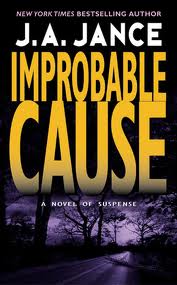 Over the last few months I been re-reading J.A. Jance’s J.P. Beaumont novels from the beginning. The fifth book in the series, Improbable Cause, features a dark, disturbing murder mystery and some new insights into Beau’s character via his relationship with his ex-wife. Jance leads us on several false paths as we work along with Beau to solve the mystery. We meet several likeable suspects whom we wouldn’t want to see punished should they be the killer. I thought the police administrators went out of their way to make Beau’s work more difficult and I wished we’d had more interaction with Beau’s old partner.
Over the last few months I been re-reading J.A. Jance’s J.P. Beaumont novels from the beginning. The fifth book in the series, Improbable Cause, features a dark, disturbing murder mystery and some new insights into Beau’s character via his relationship with his ex-wife. Jance leads us on several false paths as we work along with Beau to solve the mystery. We meet several likeable suspects whom we wouldn’t want to see punished should they be the killer. I thought the police administrators went out of their way to make Beau’s work more difficult and I wished we’d had more interaction with Beau’s old partner.
Improbable Cause wasn’t my favorite book in the series so far but it was a solid story with enough twists to keep it interesting. And, as always, I enjoyed the references to Seattle and the further development of familiar and likeable characters.
